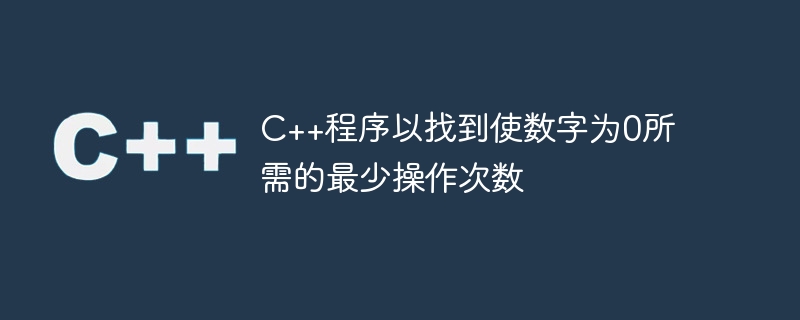
假设我们有一个包含 n 位数字的数字字符串 S。假设 S 代表一个数字时钟,整个字符串显示从 0 到 10^n - 1 的整数。如果位数较少,则会显示前导 0。按照以下操作 -
将时钟上的数字减 1,或
交换两位数字 p>
我们希望时钟能够以最少的操作次数显示 0。我们必须计算完成此操作所需的操作数。
因此,如果输入类似于 S = "1000",则输出将为 2,因为我们可以将前 1 与后 0 交换,所以字符串将是“0001”,现在将其减 1 得到“0000”。
为了解决这个问题,我们将按照以下步骤操作 -
n := size of S
x := digit at place S[n - 1]
for initialize i := 0, when i <= n - 2, update (increase i by 1), do:
if S[i] is not equal to '0', then:
x := x + (digit at place S[i]) + 1
return x让我们看看以下实现,以便更好地理解 -
#include <bits/stdc++.h>
using namespace std;
int solve(string S) {
int n = S.size();
int x = S[n - 1] - '0';
for (int i = 0; i <= n - 2; i++)
if (S[i] != '0')
x = x + S[i] + 1 - '0';
return x;
}
int main() {
string S = "1000";
cout << solve(S) << endl;
}"1000"
2
以上是C++程序以找到使数字为0所需的最少操作次数的详细内容。更多信息请关注PHP中文网其他相关文章!




